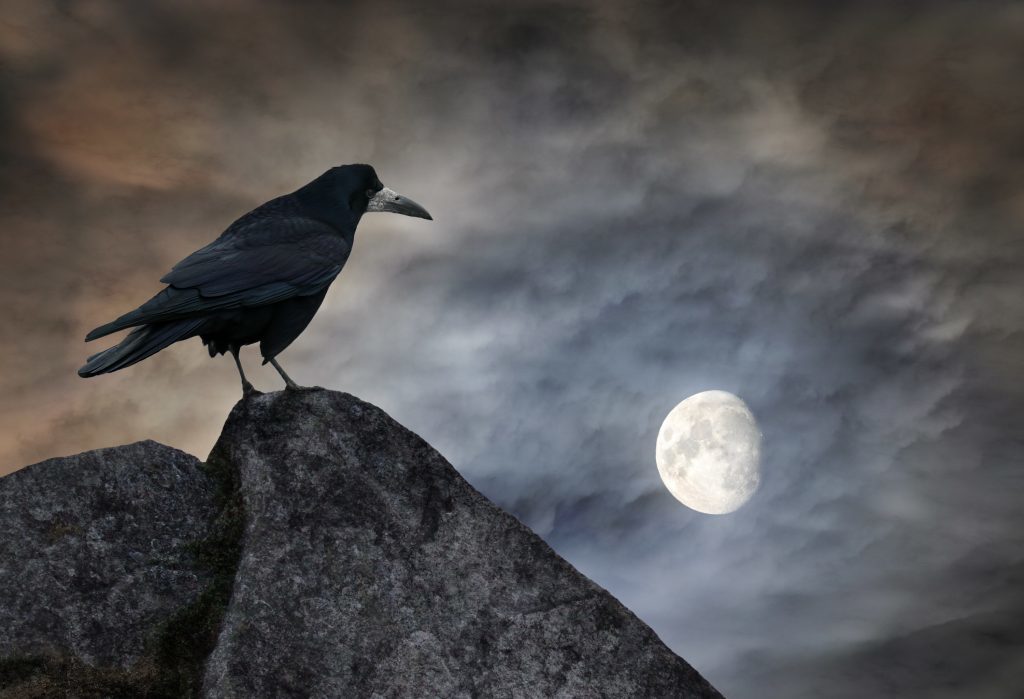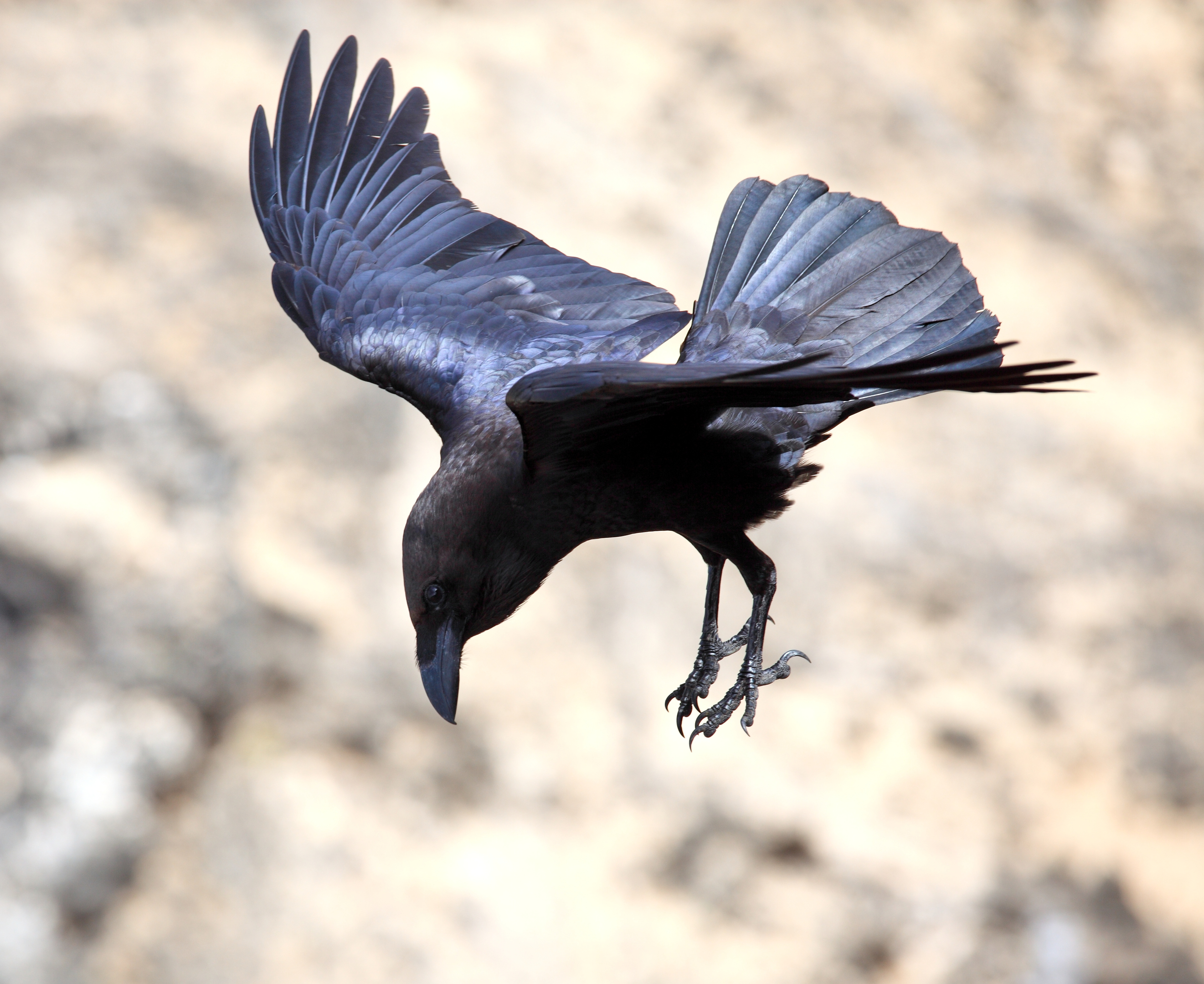Up and down go the crazy ravens in looping undulations, some of the birds suddenly splitting off into pairs to engage in their own sweeping aerobatics before joining the main group again.
I scan the brow of this grassy hill with my binoculars and see several more ravens sitting along a line of fence posts, watching the proceedings. But soon they too take to the air and join the melee. There are now more than 20 in the air, spiralling and tumbling just above the ridge in a spectacular black-winged aerial ballet.
For the last few evenings I have come to this wonderful rolling landscape of hill and wood near Dunning in southern Perthshire to watch this sky dancing. The displays always seem to occur just above the ridge, possibly because the swirling air currents provide extra lift here. These airborne antics also only ever take place an hour or so before dusk – when I visit during the day there are few ravens about.
It is well known that ravens flock in autumn and it is believed that such congregations consist mainly of young birds and adult non-breeders. Some studies also suggest that such behaviour is part of the process of pairing-up and finding the right partner.
Maybe so, but when watching these ravens toss their bodies about all over the sky, one can’t help but feel that they are also enjoying themselves and doing it all for a bit of fun. After a hard day foraging for food, why not socialise with your contemporaries before bedding down for the night?
There is often the tendency to look for explanations for every aspect of animal behaviour when perhaps there is sometimes no reason at all, other than letting off some steam and having a bit of horseplay.

I’m also sure that this evening flock doesn’t just consist of singletons, for as the light fades I often see separate pairs of ravens swooping in from afar to join the party, which I presume are well-established couples. Ravens are loyal birds and mate for life.
A traditional name for a flock of ravens is an “unkindness of ravens”, which refers to an old legend that ravens push their young out of the nest early to survive as best they can. Not true of course – ravens are very good parents.
But then again in folklore the raven has been much vilified from the earliest of times; a dark cloak of a bird that haunts our wild and lonely places. As I watch these birds silhouetted against the gloaming sky, rising and falling in the air like huge black bats, I feel a sense of empathy for this foreboding felt by our ancestors.
But it is only a fleeting moment on my part, for as I bring the swirling flock back into focus once more with my binoculars, I find it impossible to associate the macabre with a group of birds’ so intent on having so much fun.
Info
After centuries of persecution, a more enlightened attitude in recent decades has resulted in there being a significant increase in raven numbers and they can now be seen in many parts of Courier Country.










